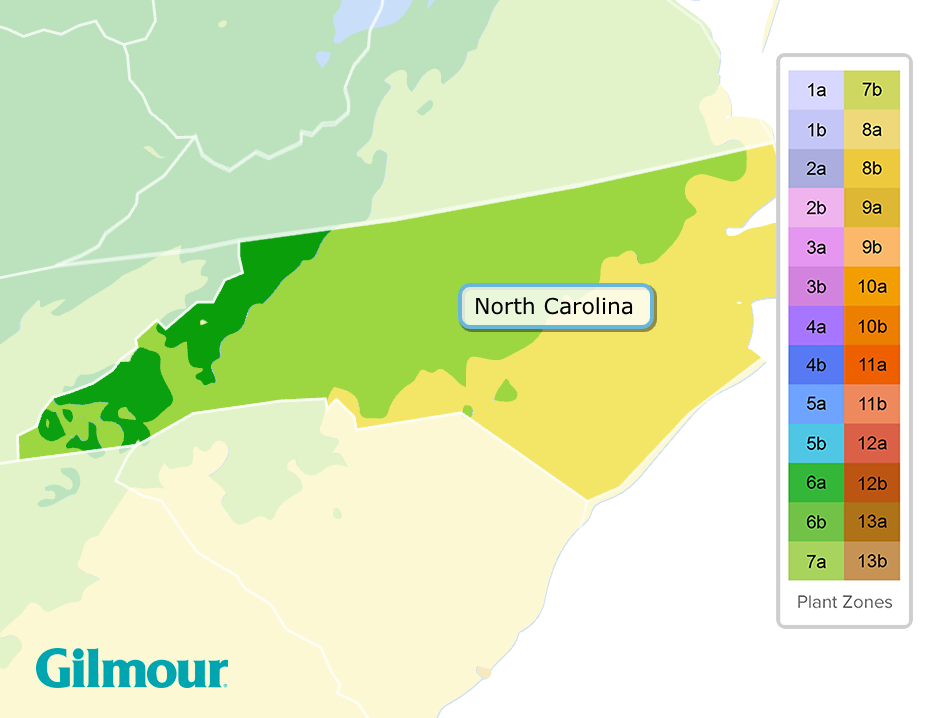


Most of North Carolina’s climate is a humid subtropical climate with the exception of the Appalachians, which have a subtropical highland climate. The North Carolina mountain ranges across the state keep the storms and extreme low temperatures from the Midwest from impacting it too much. Midsummer temperatures average in the 90s, whereas average winter temperatures are generally in the 50s. The climate is affected by the Atlantic Ocean and the Gulf Stream, which allows for warmer winter temperatures in the coastal parts of the state. In those coastal regions, winter temperatures rarely drop below freezing. The state as a whole though can see occasional severe weather patterns both in the winters and the summers. Summers can see abundant rain, tropical storms and hurricanes which often result in flooding.
North Carolina growing zones range from 5b to 8b. Growing zones, also known as planting zones, help gardeners know what flowers, plants or vegetables will thrive in a specific region. Zones also determine which plants will be most likely to survive the winter conditions of the zone. But they do not only guide on what to plant, they also help determine when the best time to plant is, too. North Carolina planting zones base everything planting-related on when the zone’s first and last frost dates are. Keep in mind that when planting a garden, you should only use plants that are rated for the North Carolina planting zone you are planting in or lower. For example, if planting in zone 5b, choose plants rated zones 1 through 5, not any higher. This will help make sure plants can survive the winter conditions of the zone. Find your growing zone with Gilmour’s Interactive Planting Zone Map.
North Carolina has many flowers and plants that grow well throughout the state. Using the hardiness zones as a guide is the best opportunity to grow plants that will thrive. There is a wide variety to choose from. Wood anemone, Carolina lupine, dwarf crested iris, swamp milkweed and eastern blue star are all native plants that will grow with ease. Cucumbers, pumpkins, cabbage, squash, cantaloupe, watermelon and tomatoes will all do exceptionally well throughout the state, too.
From the moment you pick it up, you’ll notice these nozzles are different. Designed with mobility in mind, they feature Gilmour’s innovative Swivel Connect. The swivel allows the nozzles to pivot without
Learn MoreWinter Gardening Tips to Tackle in the Off Season
As winter marches on, avid gardeners become more and more eager to get growing. While you may not be able to dig your spade into the soil just yet, there is plenty
Learn MoreDesign a Beautiful Drought Resistant Yard
Hot weather and drought-like conditions don’t mean a beautiful yard and garden is out of reach. Learn everything you need to know about drought tolerant landscaping, including the best type of plants,
Get the Dirt